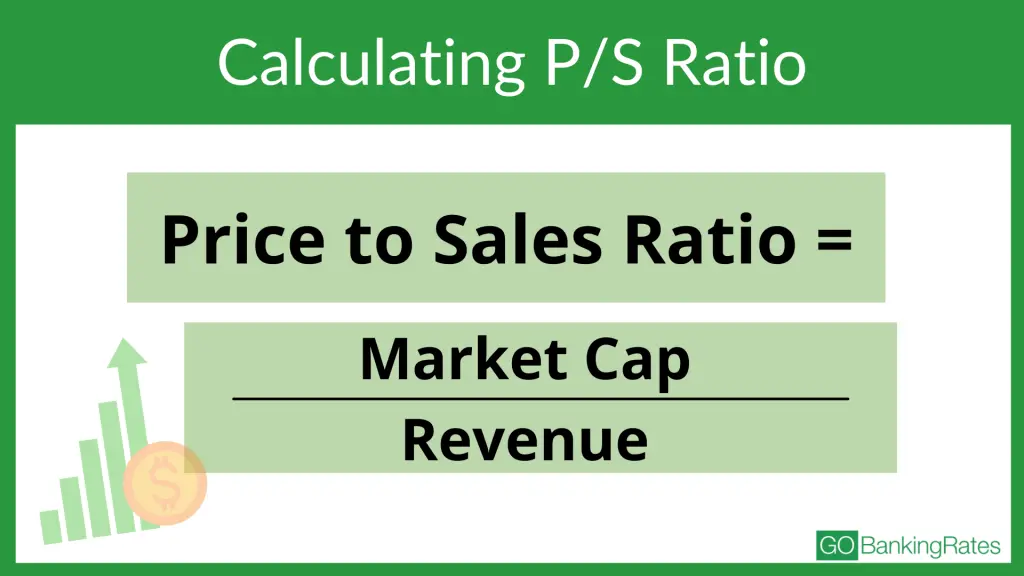Here’s How To Assess A Stock’s Value Based on Price to Sales

Commitment to Our Readers
GOBankingRates' editorial team is committed to bringing you unbiased reviews and information. We use data-driven methodologies to evaluate financial products and services - our reviews and ratings are not influenced by advertisers. You can read more about our editorial guidelines and our products and services review methodology.

20 Years
Helping You Live Richer

Reviewed
by Experts

Trusted by
Millions of Readers
The price-to-sales ratio, commonly abbreviated as the P/S ratio, is one of many measures that help investors assess the value of a company. This particular ratio compares the stock price to the company’s revenues. What it shows is the amount that investors are typically willing to spend per dollar of sales. Generally, a lower P/S ratio is better. According to Forbes, revenue-based valuations are some of the “cleanest” methods to assess a company’s value.
Keep reading to learn more about the P/S ratio and how to use the measure as a way to value a company’s stock.
How To Calculate the P/S Ratio
The P/S ratio is a crucial valuation measure for investors and analysts to understand the value of a company’s stock. The primary method for calculating the P/S ratio for a company is to divide its market capitalization by its revenue. The formula is Price to Sales Ratio = Market Cap / Revenue.

Typically, analysts use the company’s sales in the prior 12-month period for the calculation. However, other measures of revenue can be used, including sales during the current fiscal year, for example. Forecasted revenues can also be used to calculate a P/S ratio forecast.
This ratio helps investors value stocks because it shows how much investors value a company’s sales. It’s beneficial in analyzing companies that haven’t turned a profit yet or are in a temporary setback. The ratio can show whether a company is overvalued or undervalued.
Here’s a hypothetical company and its revenues for the past four quarters. We’ll also assume the company’s stock is trading at $10 with a market capitalization of $1 billion.
| Quarter | Revenue in Millions |
|---|---|
| Q1 | $100 |
| Q2 | $105 |
| Q3 | $110 |
| Q4 | $95 |
Using the formula above, we would divide the company’s market capitalization by the total sales for the past four quarters.
- Market cap = $1 billion
- Revenue = $410 million
That calculation gives us a P/S ratio of about 2.4. You would use this value to compare the company with others in the same sector and size in terms of market cap. This comparison can indicate whether our hypothetical company’s stock is overvalued or undervalued relative to the competition.
Another Method
Did you know? You can also calculate a company’s P/S ratio on a per-share basis. To do that, you need to calculate the market value per share and divide that by the company’s sales per share. It’s the same concept but a slightly different approach.
Consider Other Measures, Too
The P/S ratio only takes revenue into account. It doesn’t factor in cash flow or earnings now or the future. This measure also ignores a company’s debt as well as its balance sheet. For these reasons, you shouldn’t evaluate a company solely based on its P/S ratio. It’s just one of several key valuation measures that savvy investors should consider. Here are some other ways to research stocks:
- Price-to-Earnings
- Price-to-Book Value
- Price-to-Cash Flow
In short, while the P/S ratio is helpful, it’s never advisable to invest in a company based on a single metric.
Frequently Asked Questions
How are P/S ratios helpful?
Price-to-sales ratios can help investors evaluate companies that aren’t earning profits yet.
An excellent example of this is Amazon, a company that didn’t turn a profit for several years after going public. As Amazon’s sales increased, its P/S ratio decreased, indicating potentially a good buy.
Using P/S ratios is also helpful when comparing companies in cyclical industries or when companies aren’t producing earnings all the time. Investors can compare P/S ratios between these companies instead of the price-to-earnings ratio.
What is a good P/S ratio?
The short answer is it depends. There isn’t one answer although, generally, lower values are better. The best way to evaluate a P/S ratio is to compare it to similar companies in the same sector. A company with a lower P/S ratio than the average of its peers can indicate a bargain. On the flip side, a company with a higher than average P/S ratio can be a warning sign.
However, even low P/S ratios don’t always mean good bargains. In industries with extremely low profit margins and large amounts of sales, the P/S ratio will typically be very low. In other industries with higher profit margins, higher P/S ratios can indicate bargains.
What are the limitations of the P/S ratio?
The P/S ratio doesn’t take into account many critical financial factors. For example, by definition, the ratio ignores profits, debt and the company’s balance sheet. A company may have a low P/S ratio but enormous amounts of debt. In this case, the low P/S ratio is not a good indicator of value.
In industries where sales don’t matter, a revenue-based valuation method is not likely to be very useful. For example, banks and real estate investment trusts are not companies where sales is a critical factor. Therefore, if you want to assess the value of companies like these, you’ll want to consider a different approach.
It also doesn’t help to compare different-sized companies or companies in other industries. It’s best to stick to comparisons within the same sector and companies with similar market caps.
What is the difference between the P/S and P/E ratios?
The price-to-sales ratio measures the value of a company based on its sales. On the other hand, the price-to-earnings ratio measures the value of a company based on its earnings or profits.
Both ratios help assess the value of a company but work in different ways. In each case, whether the metric is good or not depends on a comparison between similar-sized companies in the same sector.
What is the Enterprise Value-to-Sales Ratio?
Unlike the P/S ratio, this metric takes a company’s debt load into account when assessing value. Enterprise value-to-sales ratios measure the total purchase price of a company in terms of its sales. Enterprise value considers debt and preferred shares. It’s more challenging to calculate, but some investors prefer it for that reason.
Our in-house research team and on-site financial experts work together to create content that’s accurate, impartial, and up to date. We fact-check every single statistic, quote and fact using trusted primary resources to make sure the information we provide is correct. You can learn more about GOBankingRates’ processes and standards in our editorial policy.
- Forbes. 2020. "How To Use Price-To-Sales Ratios To Find Good Stocks."
 Written by
Written by  Edited by
Edited by 

























